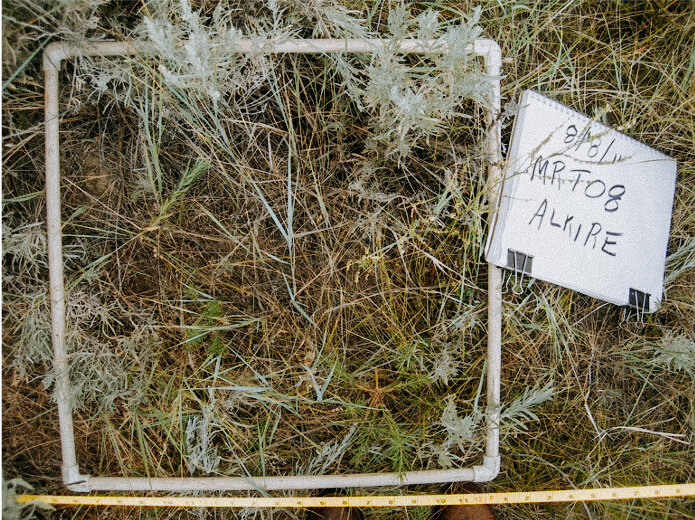To effectively manage land, we need to understand and monitor the land itself.
Ranch Advisory Partners exists to support the health and vitality of western rangelands. In doing so, we support the people, enterprises, and wildlife that are connected to this land.
How do we know what management changes are needed to enhance operational performance? It all starts with our Rangeland Health Monitoring program, a service that provides the baseline data necessary to identify the critical steps that are required to reach long-term ecological and financial goals. This process has three key steps.
Step 1
Identify
Key
Locations
First, we choose monitoring sites, putting the highest priority on locations of ecological concern or that will see rangeland management changes, such as adjustments to grazing plans or infrastructure developments.
Step 2
Collect
and Analyze
data
Every three to five years, our team revisits individual monitoring sites. Viewing these data over time allows us to understand trends in ecological function and fine-tune management practices in response.
Step 3
develop Management recommendations
Most importantly, we distill this data into annual reports that we share with you during face-to-face meetings. During these meetings, we design management strategies to optimize ecological and financial performance over time.
Data Collection Approach
We customize our data collection to fit your operation’s needs, whether that’s following the BLM’s AIM protocol, collecting rangeland health monitoring data as an NRCS technical service provider, or developing a customized protocol to fit your needs and budget.
For more information on the major indicators of rangeland health, see our Bullseye! Framework.
Rangeland Health Monitoring is provided to each of our ranch management clients or as a stand-alone service.
WHY WE MONITOR: BLENDING ECOLOGICAL & FINANCIAL PERFORMANCE
The productive potential of any ranch operation is fundamentally connected to the land base on which it operates. Some questions that might be asked when considering a ranch’s potential are:
How much forage can this land grow?
Is the land ecologically resilient in the face of stressors such as drought or fire?
The answers to these questions depend on the management approaches being implemented. This is because management strategies influence the long-term performance of the land and therefore the long-term performance of the livestock enterprise. In other words, the capacity of a ranch is defined by its management strategy.
Given this, the most important question every ranch needs to ask is: Are the management strategies we are implementing designed to improve the ecological, and therefore financial, performance of the property over time?
Gathering rangeland health monitoring data is central to answering this question. It also allows our team to identify opportunities for improvement and the specific strategies necessary to achieve that improvement.
monitoring example
The details below provide an example of the value of monitoring data from one of Ranch Advisory’s longest-running clients. The ranch’s name has been omitted for privacy.
RANCH SPECS
20,000+ acre property located at the convergence of mountains, plains and desert ecosystems
10-14” Precipitation Zone
Began working with Ranch Advisory in 2002 because the property was underperforming as an ecological and financial asset.
INITIAL MONITORING DATA
High bare ground
Active erosion
Low plant productivity
Abundant invasive species
RECOMMENDED MANAGEMENT ACTIONS PURSUED
Added pastures: From 16 to 57
Invested in stock water and fencing
Shortened grazing durations (<14 days/pasture in the growing season)
Lengthened recovery periods
Altered season of use
Click and drag to see before and after images of our work








